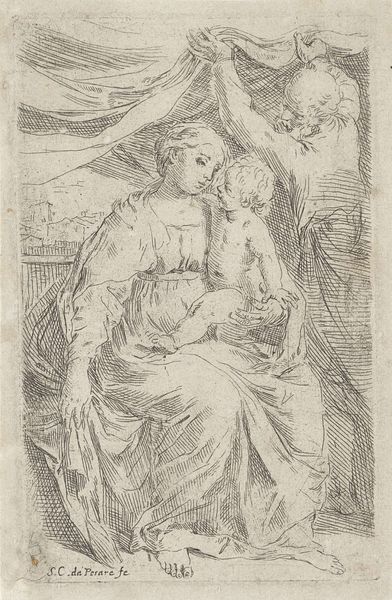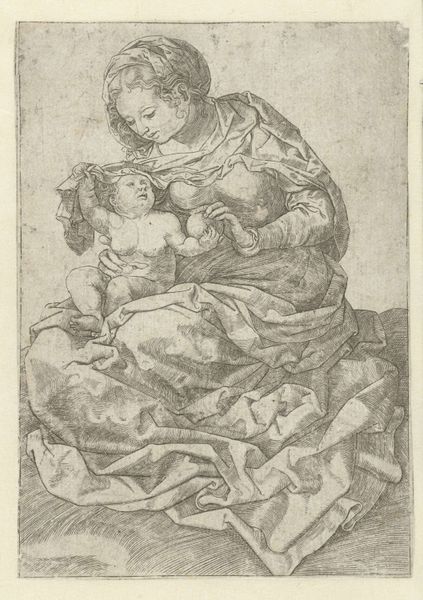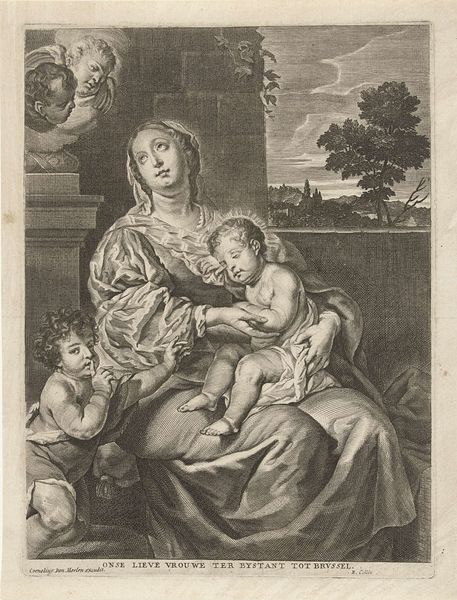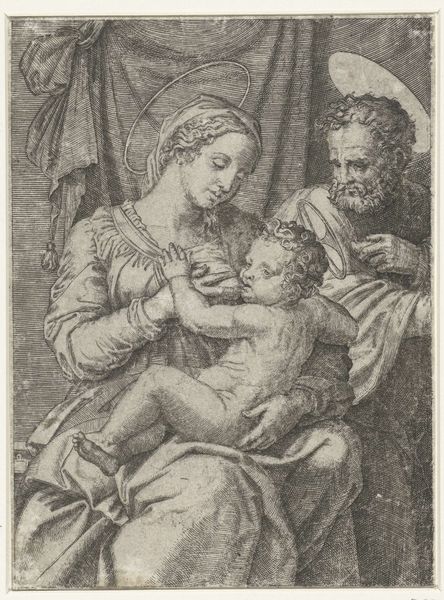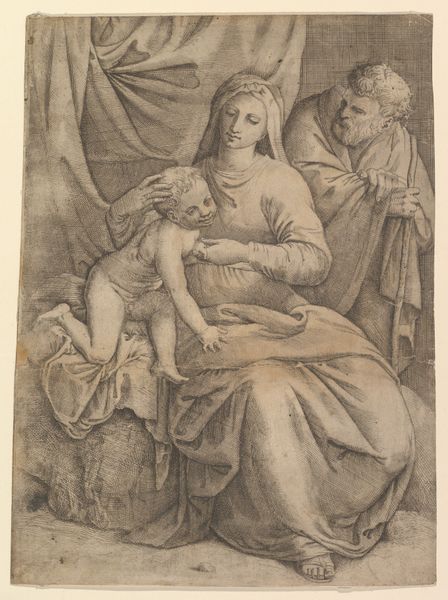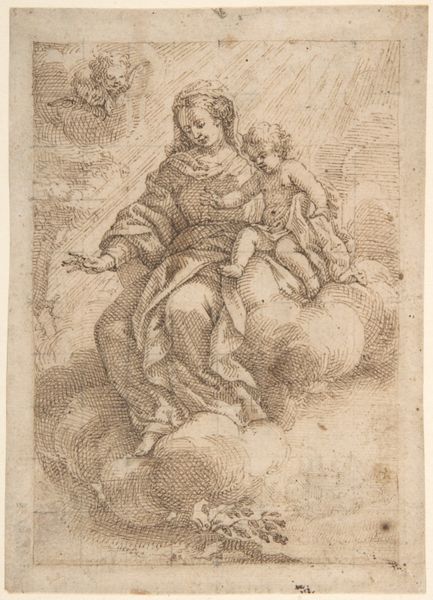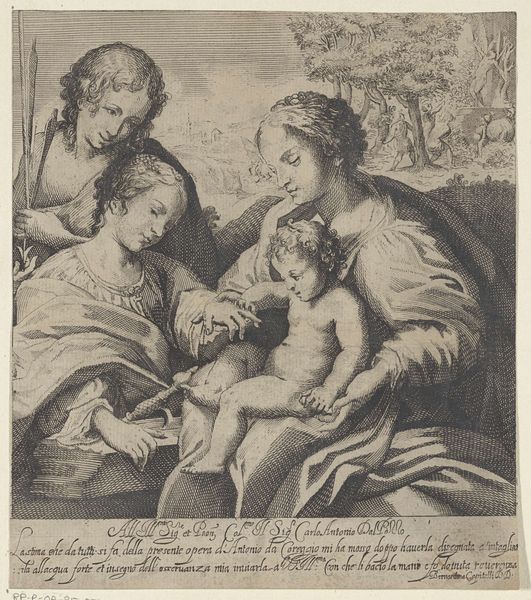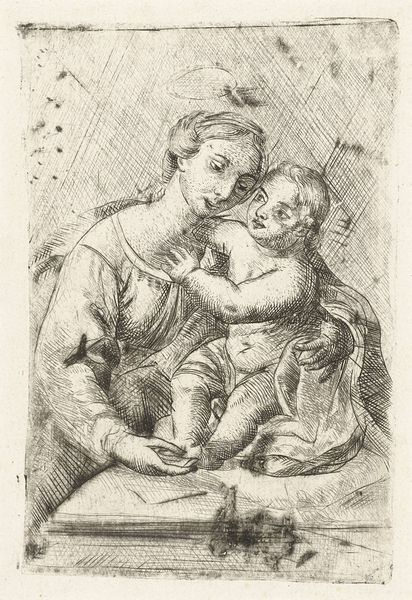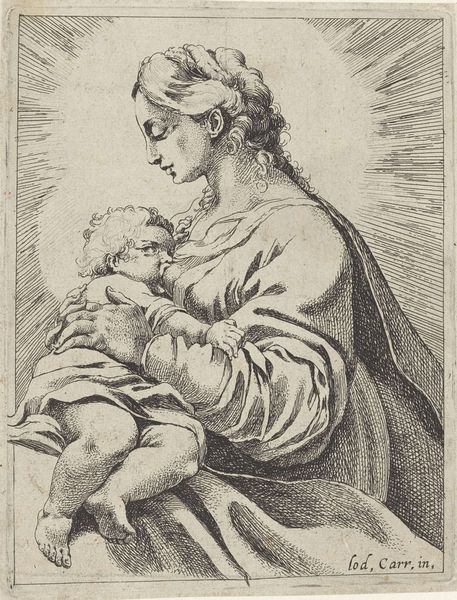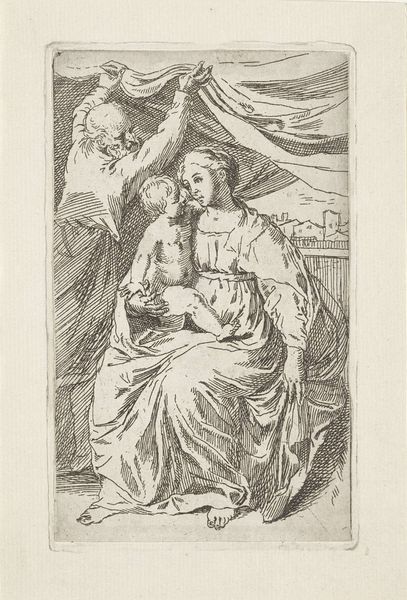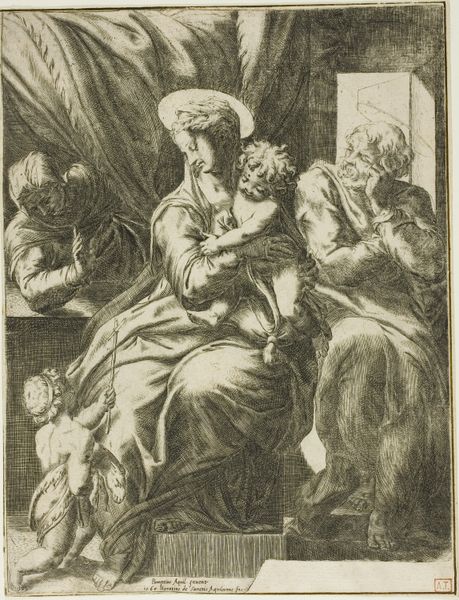
print, engraving
#
portrait
#
baroque
# print
#
figuration
#
pencil drawing
#
genre-painting
#
engraving
Dimensions: height 249 mm, width 185 mm
Copyright: Rijks Museum: Open Domain
Curator: Up next is "Maria zoogt het Christuskind," which translates to "Mary Nursing the Christ Child," an engraving by Bartolomeo Biscaino, created sometime between 1642 and 1657. Editor: There’s a peaceful intimacy in this image, wouldn’t you say? It feels less like a formal religious portrait and more like a fleeting, tender moment. Curator: That's a key aspect of the Baroque era. We see religious themes presented in a more humanized, relatable way. There's an emphasis on capturing genuine emotion and the everyday aspects of life, even in sacred subjects. It moves beyond mere representation into creating an empathetic connection with the viewer. Editor: Exactly! And it's the details, those quiet little moments – like the sleeping cat in the lower corner, the attentive figure of Joseph sitting nearby, the second child quietly standing– they create such a familiar domestic scene. Curator: And observe the textures Biscaino achieved with just engraving. The softness of Mary’s drapery, the almost translucent quality of the child’s skin. It gives the piece an almost dreamlike quality. Consider too how printmaking at this time allowed for a democratization of imagery; works such as this could circulate widely, reaching a broad audience who might not otherwise encounter such artistry. Editor: It's incredible to think about its wide distribution during that era! The way the artist captured this moment… mother and child… pure bliss, perhaps that's why this resonates deeply. The love, the comfort, the absolute trust – it's palpable. Timeless. It feels less staged, which draws me in more, actually. Curator: I concur. It transcends religious context through its humanity, which certainly ensures its continued appeal and allows it to be widely accepted as it celebrates a specific kind of domestic tranquility. Editor: I hadn’t considered how its medium could affect viewership then, and still, even now. Thanks! Curator: It has been my sincere pleasure to guide you further today through the sociopolitical meaning of Biscaino's delicate rendition, which you can discover more of next with an on-site museum tour.
Comments
No comments
Be the first to comment and join the conversation on the ultimate creative platform.

